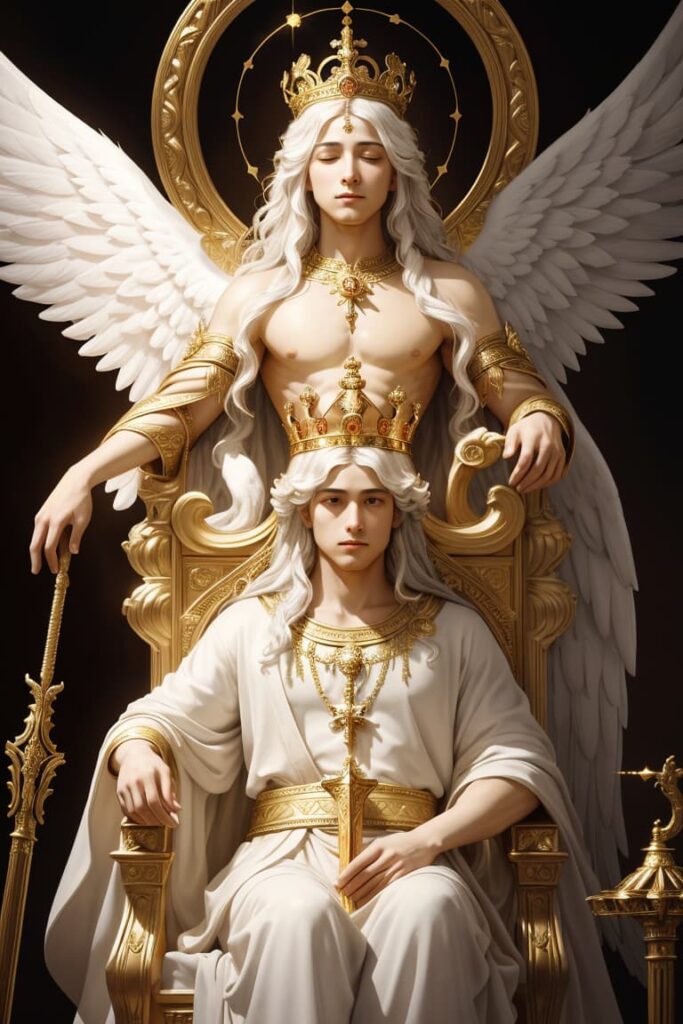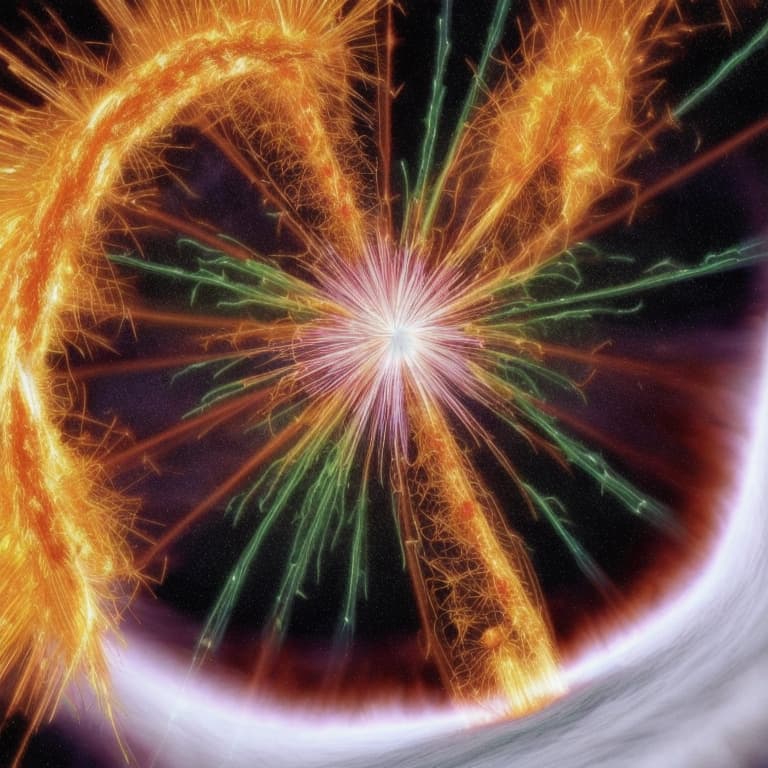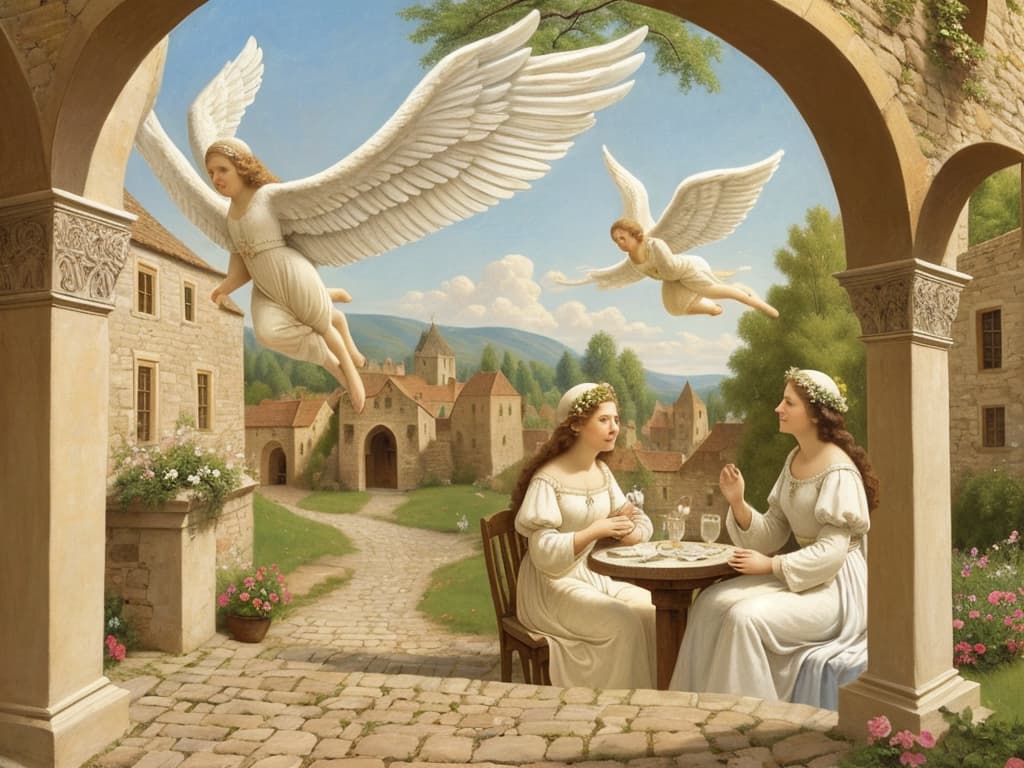The Rebellion of the Gods – The Collapse of Spiritual Order After Peace
After the continent of Pan sank beneath the sea, the influence of the false god Drujas disappeared from the Earth. Humanity regained its humility, and a time of peace followed.
The Earth began to flourish, and many nations emerged across the land. This prosperity was seen as a success not only for humanity but also for the gods who oversaw the world. The gods and ruling deities rejoiced in the result.
In OAHSPE, a “God” refers to a spiritual being who has ascended to a high rank and serves as an administrator of the heavens.
Beneath them are “Lords,” who typically govern specific nations or cities and serve under the guidance of a higher God.
Next in the spiritual hierarchy are the “Marshals,” who remain close to the thrones of the gods and lead large groups of angels.
Below the Marshals are the “Loo’is,” angels responsible for guiding human births.
Then come the “Ashars,” commonly known as guardian angels, who watch over people in the physical world.

Beneath them are the “Asaphs,” whose role is to escort the spirits of the deceased into the spiritual realms.
Even among spirits, there exists a ranking system. As spirits grow and develop, they are able to ascend to higher levels. An Asaph, for instance, may eventually become an Ashar, then a Loo’is, a Marshal, a Lord, and perhaps even a God.
In this system, the “achievements” of a god or angel are measured by the prosperity of the people or nations they oversee.
If a nation thrives and grows strong, the Lord responsible for that nation receives spiritual honor.
In other words, for the gods, the flourishing of their assigned nations or towns directly enhances their own spiritual status.
For this reason, the gods encouraged rulers—kings, queens, and local leaders—to expand their domains and grow their influence.
But once desire is born, it becomes difficult to restrain.
As gods wished for greater nations and stronger powers, their ambitions began to spiral out of control.
Building a powerful country required a compliant labor force, and unfortunately, this led to many innocent people being enslaved.
As massive empires rose, the Lords and Gods in charge began to grow arrogant. They no longer listened to the higher spiritual beings who managed the Earth as a whole.
Following the submersion of Pan, this new era saw a different kind of collapse—this time, it was the gods themselves who entered a phase of rebellion.
Tetract and the Fall of Earth: The Story of Archangel Sue’s Restoration of Order
Around 19,000 B.C., Earth had become a planet where virtuous humans could no longer thrive.
The Creator, Jehovih, referred to Earth at this time as a “barren world.”
Originally, Earth was designed to nurture righteous souls and harvest them.
These cultivated souls were known as the “brides and bridegrooms of Jehovih.”
Eventually, they would ascend to the higher heavens and be offered to the Creator in a sacred union.
Through this process, the higher realms became home to countless advanced spirits, who engaged in the greater workings of the universe.

However, as wickedness spread across the Earth and virtuous people ceased to grow, high-level souls were no longer born.
This meant that the offering of worthy souls to the higher heavens came to an end, and Earth could no longer fulfill its divine purpose.
In this context, Jehovih declared Earth to be a “barren world.”
To correct this situation, the Creator commanded the archangel Sue to descend to Earth and purge it of its deeply rooted evils, restoring spiritual order.
These evils were collectively referred to as the Tetract, and seven specific forms were identified as particularly destructive:
- Dibbah: the evil of temptation
- Ra: the evil of the flesh
- Zimmah: the evil of frivolity
- Belyyaal: worthlessness
- Aven: vanity
- Anash: delight in destruction
- Sa’tan: commander of death and leader of desire
Among them, Sa’tan was the most dangerous.
When people allowed the Tetract to take root in their hearts, they gradually fell into wrongdoing, and their spirits declined in rank.
They turned away from light, grew fond of darkness, and eventually pulled even the virtuous into corruption.
One reason these evils took hold so easily lies in the nature of Earth itself—a world bound by physical laws and limitations.
Earth is divided into two realms: the visible world (the corporeal realm) and the invisible world (the spiritual realm).
While the physical realm is governed by the constraints of matter, the spiritual realm is guided by imagination and freedom.
In the physical world, human beings—seeking to overcome their limitations—naturally develop a desire to possess more.
This drive to possess becomes desire, which eventually invites evil into their lives.
In that sense, the very structure of the corporeal world tends to attract darkness.
Therefore, for someone to live righteously on Earth, the first step is to sever selfish desires.

When selfishness grows stronger, people act out of self-interest.
This leads to conflict and strife, and soon, the world becomes a breeding ground for evil.
Archangel Sue descended to Earth—not through cataclysm, like a great flood—but through peaceful means, by teaching righteousness and cleansing the land of wickedness.
At that time, the fear and memory of the great flood still lingered in human hearts, so restoring order was not too difficult.
This is the story of the next cycle following the submersion of the continent of Pan.
Although vice had begun to take root during this period, it had not yet reached a critical or irreversible stage.
References, Images used
| Books | authors | publishers |
|---|---|---|
| OAHSPE ”A New Bible in the Worlds of Jehofih and His angel embassadors.” | John B. Newbrough | OAHSPE PUBLISHING ASSOCIATION |
Image:Generated from stable diffusion(model:etherRealMix_etherRealMix4.safetensors)
Image:Generated from stable diffusion(model:XSMerge-RealisticVisionV3-ForArchi)



コメント